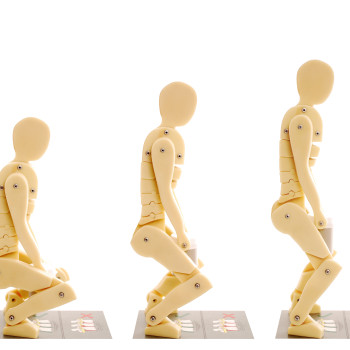Teaching your staff the art of manual handling

It’s important to invest in health and safety procedures for your staff to avoid injuries at work. Caroline McEnery of The HR Suite
11 March 2015
Almost a third of all workplace accidents reported to the Health & Safety Authority (HSA) are due to incorrect manual handling procedures. Approximately 49% of accidents result in back injury, although the hands, arms and feet may also be injured
There are enormous costs associated with these accidents and injuries both in human and monetary terms: this is mainly due to the chronic nature of the injury.
Most back pain is caused by muscle, ligament or joint sprain. This can cause discomfort or stiffness. Many injuries can build up over a period of time, rather than being the result of a single incident.
Easily avoided
With correct manual handling training these types of accidents can be avoided or reduced. This type of training can be beneficial for employees’ personal well-being by instilling good lifting techniques for both work and home.
Furthermore, manual handling training is an essential part of your legal obligations as an employer. Under Section 57 of the Safety, Health and Welfare at Work Act 2005 (No. 10 of 2005), it is a legal requirement of all employers to ensure that all their staff have received manual handling training. Employees are required to receive refresher training at intervals not more than every three years and also if there is any major changes in the work or equipment.
Under the Safety, Health & Welfare at Work Act, it dictates the duties of both the employer and the employee. For the employer their duties include providing a safe place of work, providing training, providing PPE, providing safe access and safe systems of work. For the employee their duties include complying with statutory regulations, no improper conduct at work, using the PPE, reporting any defect in machinery, attending training and ensuring that the workplace is a safe one for yourself, your colleagues and others (which includes customers, suppliers etc.)
The Safety, Health & Welfare at Work Act also introduced a definition for manual handling:
“Manual handling is any transporting or supporting of a load, by one or more employees which involves lifting, putting down, pushing, pulling, carrying or moving of a load, which by reason of its characteristics or of unfavourable ergonomic conditions involves risk, particularly of back injury to employees”.
Reduce risk
You can reduce the risk of accidents and injury by doing the following:
- Not lifting loads that are too heavy
- Not bending forward for prolonged periods
- Not twisting the trunk unduly
- Not using sudden movements
- Being aware of posture
- Following the eight principles of safe lifting that will hugely help you to avoid injuring your back
Training includes information on the legal requirements, understanding the effects of wrong lifting, practical examples of lifting loads and an assessment. Correct training is essential for an employee’s well-being as it instills good techniques for both the workplace and home. Upon successful completion of the course, the attendees will be presented with a certificate confirming they have completed the training and passed the assessment. All employees must receive this training every three years.
The eight principles of safe lifting are as follows:
- Assess the task, area and load
- Broad stable base
- Bend the knees
- Keep back straight
- Palmar grip
- Arms close to trunk
- Object close to centre of gravity
- Move feet in direction of movement
Things we can do to take care of our backs
- Being active – regular physical exercise will keep your back strong and flexible
- Maintaining a good posture
- Lifting the correct way – following the eight principles and asking for assistance where necessary
Importance of posture
Maintaining a good posture is vital. Poor posture can strain ligaments in your back. Learning and maintaining good posture can help prevent back pain.
In a recent case, which was highlighted in the media, it stated how important it is that training takes place and that there is a record of same. The case also highlighted that the exercise which was carried out, was not remotely comparable to the lifting exercise which the employee may have to do in the course of work duties. Therefore, it is important that all staff record their attendance for the training and if possible, to conduct the practical assessment on site – being able to use similar items which employees would be required to lift/move/carry etc.
Ensuring that all employees are trained in manual handling is an investment for employers as introducing correct manual handling procedures will prevent injuries and will therefore prevent claims arising from employees who suffer injuries as a result of poor manual handling techniques.
Contact The HR Suite on (066)7102887 to arrange manual handling training for your workplace. One of their qualified trainers can facilitate this training onsite or at their premises in Kerry.
The HR Suite also offers an online option, you can access this by logging into www.thehrsuiteonline.com.



 Print
Print




Fans 0
Followers